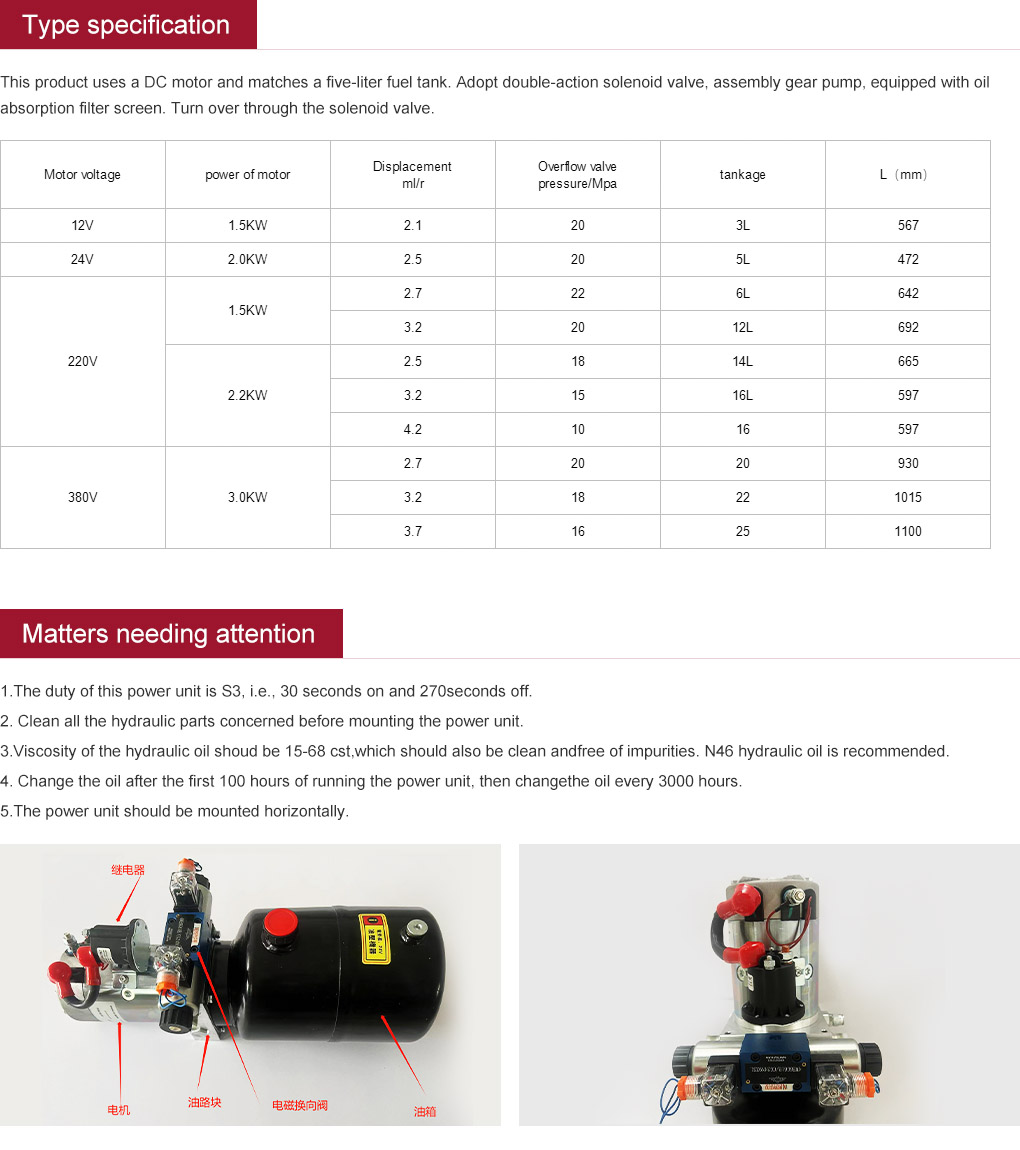Dec . 09, 2024 23:38 Back to list
Explore High-Performance Dual Action Hydraulic Cylinder Products for Versatile Applications
Understanding Dual Action Hydraulic Cylinders Features and Applications
Hydraulic cylinders are essential components in many industrial machines and equipment, serving as the muscle that drives various operations. Among the different types of hydraulic cylinders, dual action hydraulic cylinders are particularly noteworthy for their versatility and efficiency in both extension and retraction movements. This article delves into the features, advantages, and applications of dual action hydraulic cylinders.
What is a Dual Action Hydraulic Cylinder?
A dual action hydraulic cylinder, also known as a double-acting cylinder, operates using hydraulic fluid to generate force in both directions – when extending and retracting. Unlike single-acting cylinders, which use hydraulic pressure for one movement (usually extending) and rely on external forces, such as springs, for the return motion, dual action cylinders have ports on both sides of the piston. This design allows them to be powered in both directions, making them ideal for applications that require consistent and controlled motion.
How Does It Work?
The operational principle of a dual action hydraulic cylinder is straightforward. When hydraulic fluid is pumped into one side of the cylinder, it pushes the piston, causing the cylinder to extend. Conversely, when fluid is directed to the opposite side, it pushes the piston back, retracting the cylinder. This bidirectional functionality allows for greater control, precision, and efficiency in various applications.
Key Features
1. Bi-Directional Movement The primary feature of dual action hydraulic cylinders is their ability to work in both directions, providing dynamic motion control.
2. Higher Force Output These cylinders can generate higher force in both extension and retraction, making them suitable for heavy-duty applications.
3. Precision Control The ability to regulate fluid flow to both sides of the piston enables precise control over speed and position.
4. Robust Construction Most dual action hydraulic cylinders are designed to withstand high pressures and harsh operating conditions, ensuring durability and longevity.
dual action hydraulic cylinder products

5. Versatile Sizes They come in various sizes and configurations, allowing for customization and adaptability to specific applications.
Applications of Dual Action Hydraulic Cylinders
Dual action hydraulic cylinders are widely used across various industries due to their effectiveness and reliability. Some notable applications include
1. Manufacturing In factories, dual action cylinders are used in machines for pressing, bending, and assembling components where both upward and downward motion is required.
2. Construction They play a crucial role in construction machinery such as excavators and bulldozers, helping to lift, push, and pull heavy loads with precision.
3. Automotive In automotive manufacturing, these cylinders are utilized in robotic arms for assembly lines, allowing for efficient and accurate positioning of parts.
4. Aerospace Dual action hydraulic cylinders are used in aircraft systems for various functions, including landing gear operation and wing adjustments.
5. Agriculture They are also employed in agricultural machinery, such as tractors and harvesters, providing necessary force for lifting and adjusting equipment.
6. Material Handling In warehouses and distribution centers, dual action cylinders aid in moving and positioning heavy pallets and containers, significantly improving efficiency.
Conclusion
Dual action hydraulic cylinders are indispensable in modern industry, providing efficient and effective solutions for a myriad of applications. Their ability to generate force in both directions, combined with their robust construction and versatility, makes them a preferred choice for many hydraulic systems. As technology advances, these cylinders will continue to evolve, driving innovations that enhance productivity and operational efficiency across various sectors. Whether in manufacturing, construction, aerospace, or agriculture, dual action hydraulic cylinders remain at the forefront of industrial applications, showcasing the importance of hydraulic technology in today’s world.
-
Fork Lift Power Units - Hebei Shenghan | Efficiency, Reliability
NewsJul.13,2025
-
1.5-Ton Turbocharged Cylinder-Hebei Shenghan|Hydraulic Solution,Energy Efficiency
NewsJul.13,2025
-
Auto Hoist Power Units-Hebei Shenghan|Efficiency&Industrial Lifting
NewsJul.13,2025
-
Double Acting Power Units-Hebei Shenghan|Hydraulic Solutions,Industrial Efficiency
NewsJul.13,2025
-
1.5 Ton Lifting Cylinder 70/82-40-290-535 - High-Performance Hydraulic Solution | Hebei Shenghan
NewsJul.13,2025
-
Fork Lift Power Units - Hebei Shenghan | Efficiency&Reliability
NewsJul.13,2025
